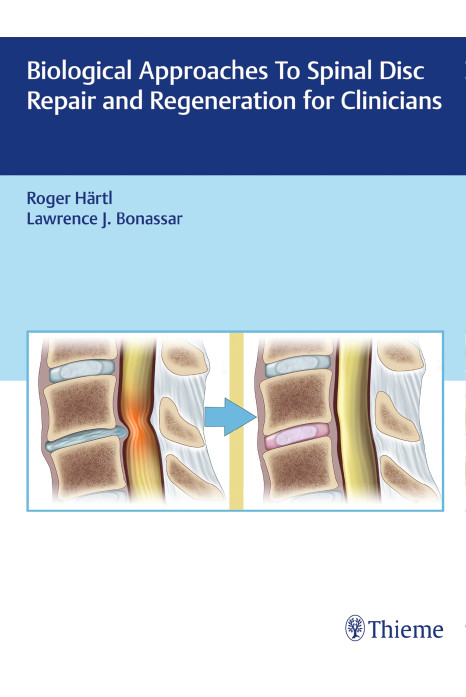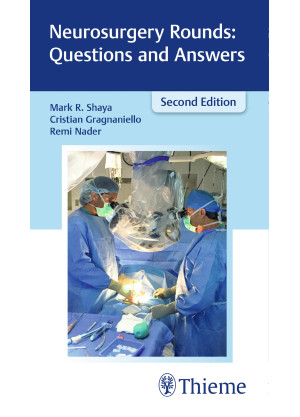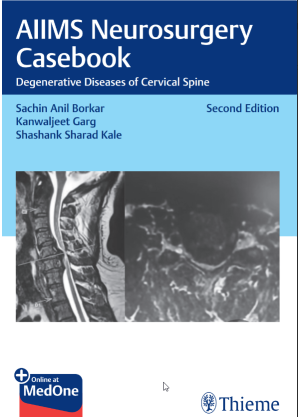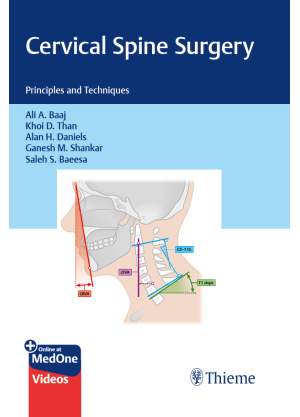Top Experts Share Clinical Insights on Biological Interventions for Spine-Related Disease
Although there have been significant advancements in minimally invasive spinal surgery techniques in the last few decades, optimal outcomes for chronic low back pain remain elusive. A number of promising clinical trials have been conducted using tissue engineering and biological interventions for disc degeneration. Written by renowned innovators, this is the first book that covers implementation of these groundbreaking approaches for disc disease.
The text begins with key fundamentals including anatomy and physiology, pathophysiology, imaging and biomechanics to delineate healthy versus diseased spine. Subsequent sections discuss treatment strategies, research findings, and future developments. Throughout each chapter, renowned spine surgeons and scientists share clinical pearls gleaned from hands-on experience.
Key Highlights
- The current state of the art in biological and tissue engineering procedures for spinal disorders
- Treatment methodologies including nucleus replacement and repair, annulus fibrosus repair, total disc transplantation, and mechanical total disc replacement
- Innovative treatment strategies for disc regeneration, such as genes and proteins
- Growth factors including platelet-rich plasma (PRP), which has shown promise for the stimulation and acceleration of bone and soft tissue healing
- Cell-based therapy for spinal disc regeneration and repair including the use of stem cells and chondrocytes
- In-depth discussion of research including animal versus human model, in-vitro, and a summary of biologic clinical trials
This is a must-have resource for trainee and practicing orthopaedic surgeons and neurosurgeons who treat patients for spine-related conditions. It is essential reading for all clinicians who have an interest in cutting-edge tissue engineering and biological treatment interventions.
Part I: Basics
1. The Human Spinal Disc: Relevant Anatomy and Physiology
2. Pathophysiology of Disc Disease: Disc Degeneration
3. Imaging of the Healthy and Diseased Spinal Disc
4. Biomechanics of the Healthy and Diseased Spine
Part II: Experimental Techniques
5. Differences between Human and Animal Discs: Pros and Cons of Current Animal Models for Preclinical Development of Biological Therapies for Low Back Pain
6. Grading Scales for Disc Degeneration and Regeneration: Clinical and Experimental
7. Disc Regeneration: In Vitro Approaches and Experimental Results
8. Intervertebral Disc Whole Organ Cultures
Part III: Treatment Strategies
9. Biological Treatment Approaches: Basic Ideas and Principles
10. Learning from Successes of Tissue Engineering Strategies for Cartilaginous Disorders
11. Treatment of Degenerative Disc Disease and Disc Regeneration: Proteins and Genes
12. Treatment of Degenerative Disc Disease/Disc Regeneration: Growth Factors and Platelet Rich Plasma
13. Treatment of Degenerative Disc Disease/Disc Regeneration: Stem Cells, Chondrocytes or Other Cells, and Tissue Engineering
14. Nucleus Replacement and Repair: Autologous Disc Chondrocyte Transplantation
15. Annulus Fibrosus Repair
Part IV: Clinical Experience
16. Summary of Clinical Trials with Biological Treatment Approaches for Spinal Disease
17. Total Disc Transplantation: Current Results and Future Development
18. What HaveWe Learned from Mechanical Total Disc Replacement?
19. Regulatory Overview: Obtaining Regulatory Approval of a Biological/Cell Product
20. What Makes Biological Treatment Strategies and Tissue Engineering for DDD Interesting to Industry?
Part V: Outlook
21. What Will the Future Bring? Perspectives From Around the World











